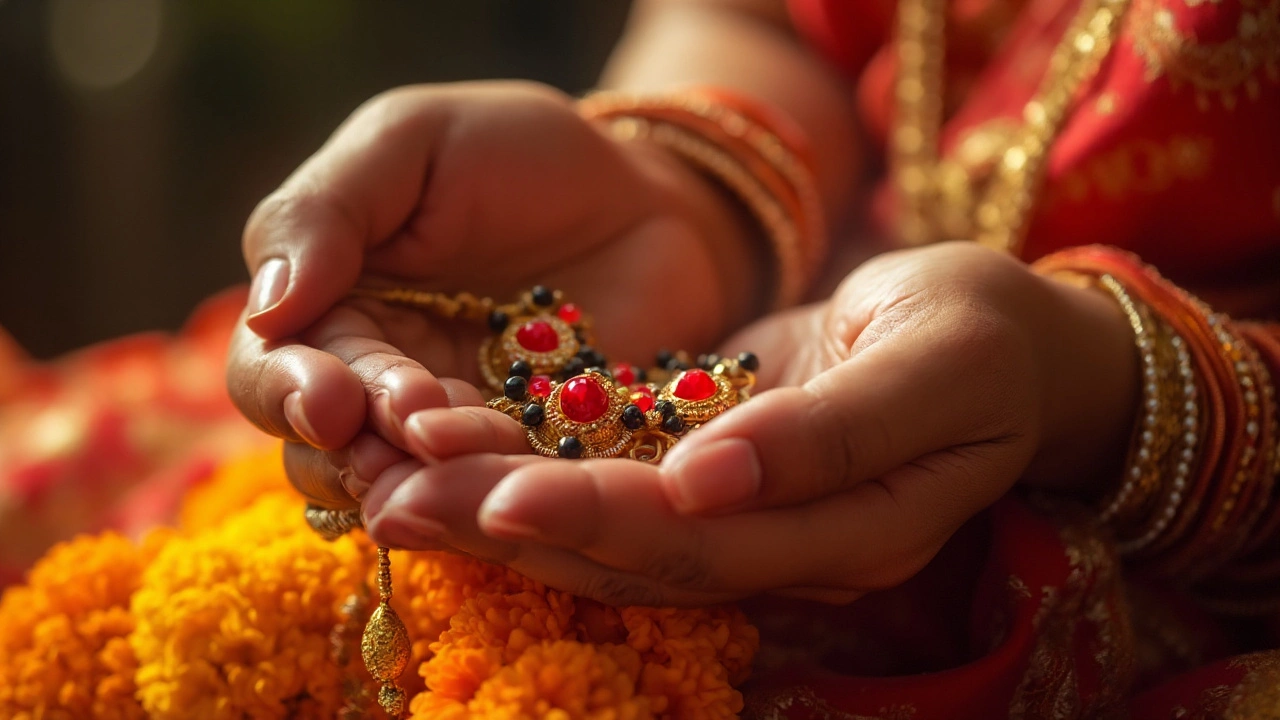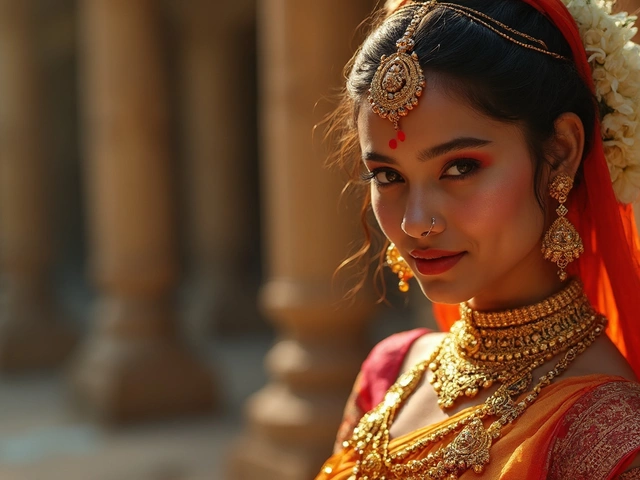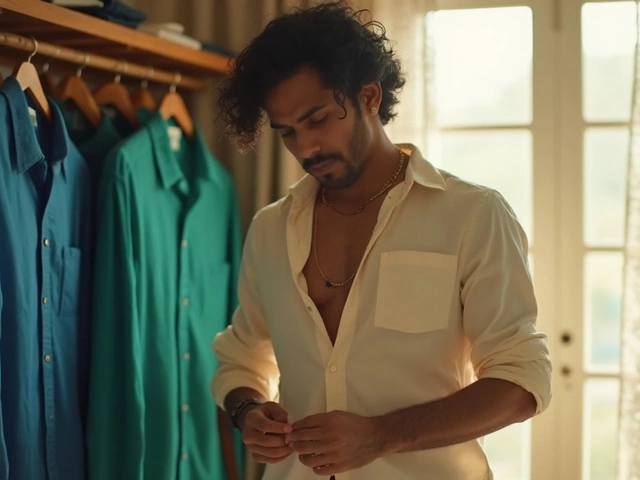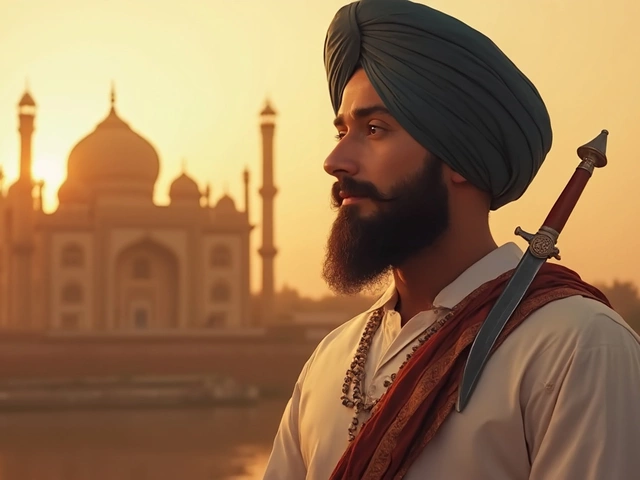If you’ve ever noticed the delicate strings of black beads in a mangalsutra, you might have wondered: Do these little beads carry some hidden power? Or is it just about keeping tradition alive? In Mumbai, Mumbai local trains might carry more demands for gold than rush-hour crowd — but every jewelry store from Colaba to Borivali sells mangalsutras with black beads. There’s something about these beads that continues to matter in 2025, even with new-age brides who’d rather style their wedding look with diamonds. It’s not just nostalgia. There’s a whole world of meaning behind those tiny black beads.
The History: How Black Beads Became a Symbol of Marriage
Let’s back up a bit and talk about where this all started. Mangalsutra, in simple words, literally means 'sacred thread.' Historical records suggest that the tradition of tying a black beaded necklace dates back more than 5000 years in India. The earliest mention is tucked away in some ancient Tamil and Sanskrit texts, describing the 'tali' or 'mangalya sutra,' which united a couple in marriage. The beads? They weren’t just thrown in randomly.
Here’s the fun part: black beads became popular not because of fashion, but out of an ancient belief in warding off the 'evil eye.' Back then, jewelry was very much about protection as well as beauty. Across India, different communities added their own spice — some in Maharashtra preferred thin black beads; Andhra Pradesh found comfort in chunkier patterns; and in Kerala, the design is completely different but with the protective spirit still there.
Many historians believe the use of black beads is rooted in the old idea that the color black can absorb negative energy. These beads, woven next to gold links, were seen as shields — a kind of spiritual armor for the married woman. It’s not superstition for fashion’s sake; it’s more like wearing sunscreen because you believe it will protect you, not because you see the sun itself as evil. There are thousands of old families (like my friend Megha’s in Bandra) who will tell you the black beads are there for 'Nazarbattu,' to protect the marriage from bad luck and jealous glances.
Plus, older versions of the mangalsutra used to be much simpler. The obsession with gold and diamonds came later, but the black bead motif never left. This says something about how deep the symbolism goes. Even modern Hollywood-influenced brides usually slip on the black bead mangalsutra at some point, sometimes hidden under their blouse if they don’t want to show off their marital status at work — but hardly ever skipping it completely. The thread, with its black beads, basically ties new marriages to centuries of tradition.
Symbolism: Beyond the Beads and Into Belief
Now, you might be thinking: all this is interesting, but does anyone really believe black beads can protect a marriage, especially in a city where Tinder and Bumble are more common than arranged rishtas? Turns out, yes — but the symbolism has grown deeper than just 'protection.'
For many Indian women, the mangalsutra with black beads is a badge — part jewelry, part social signal, and part emotional anchor. The black beads are said to soak up negative energy, yes, but people also believe they bring peace and strength to a couple’s relationship.
There’s also an entire philosophy baked in here about balance. The black represents the goddess Kali — who both destroys and protects. Gold is seen as pure and eternal. When both are strung together, the necklace is thought to balance out negativity with purity, much like how two people in a marriage support each other in good times and bad. There’s a common saying in many Maharashtrian families:
"The mangalsutra is a thread of love, trust, and the promise of togetherness. The black beads are its guardians." — Dr. Shobhana Desai, cultural historian, Mumbai University
Let’s not forget — it’s also the only jewelry most Indian women wear literally every single day, except when the thread snaps (which, by the way, is considered pretty unlucky; lots of moms in Mumbai will run to the jeweler the same day if that happens). Some brides today skip heavy gold jewelry but always opt for black beads in their mangalsutra, even if the rest of the design is minimalist or ultra-modern.
The beliefs aren’t just limited to spiritual or superstitious circles. Black beads have turned into a cultural code. They quietly signal marriage status in a way that’s as unmistakable as a wedding ring is in the West. You’ll spot Bollywood actresses like Deepika Padukone and Anushka Sharma showing off their designer mangalsutras, black beads and all, both on and off screen. It’s less about fear of bad luck and more about pride in tradition.
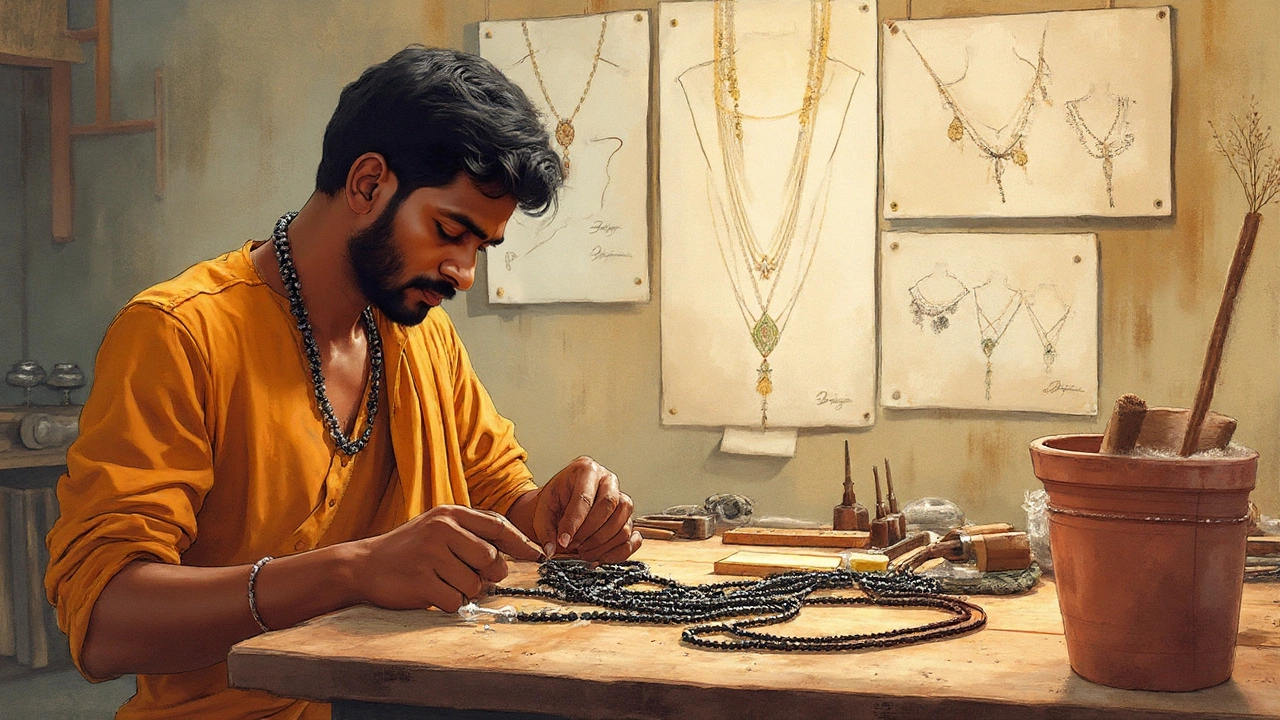
Modern Designs and Fashion: What’s Changed in 2025?
Walk into any jewelry shop at Phoenix Mall, and you’ll see mangalsutras displayed alongside Western-style necklaces. But no matter how contemporary the designs get, those black beads are still front and center. What’s changed is everything around them: the gold shapes, pendant styles, sometimes even the length of the chain. The black beads themselves are usually smaller, alternated with sparkling stones or even tiny diamonds.
Twenty years ago, mangalsutras were often bulky and had a very limited choice. Now, Mumbai jewelers say most brides want them simple — short chains, minimalistic diamond pendants, or just a row of black beads instead of elaborate gold filigree. There’s also a rise in 'workwear-friendly' mangalsutras: super lightweight, almost invisible with just the barest thread of black, so you can wear them under a shirt without needing to adjust it all day.
You’ll find interesting data on how young brides make choices now. This table breaks down a recent popular trend study among Mumbai’s new brides:
| Design Type | Percentage of Preferences (2024 survey) |
|---|---|
| Classic Gold with Black Beads | 54% |
| Minimal Diamond with Black Beads | 36% |
| All-Black Beads, No Pendant | 8% |
| Modern Fusion (Color + Black) | 2% |
What jumps out is just how few women want to let go of black beads altogether, no matter how much design tastes shift. And these aren’t just symbolic gestures. Many major designers, including Sabyasachi and Anita Dongre, refuse to launch mangalsutra lines without the classic black beads — even as they experiment with everything else.
If you ask a Mumbai jeweler why they keep the beads, they’ll talk about demand, but you’ll often get an answer that’s just as much about belief as it is about business. Also, social media is turning the spotlight back on the mangalsutra. You’ll find thousands of posts where women flaunt everything from their mother’s traditional black beads to their custom minimal mangalsutras. It’s nostalgia but with a twist — and the humble black bead is still at the heart of it.
Health Beliefs, Care Tips and Myths Around Black Beads
Ask any dadi in Mumbai and get ready for a lecture! A lot of people, especially in older generations, claim that wearing black beads in a mangalsutra can help with 'energy flow,' stress management, or even overall health. Of course, science doesn’t support most of these ideas directly, but traditional wisdom always finds a way to survive.
Here are a few interesting tips about wearing and caring for those black beads, passed down from family to family:
- Check the beads regularly: If even one black bead falls off, tradition says you should replace it quickly to 'close the energy circuit.'
- Remove during X-rays or medical scans: Hospitals in India sometimes ask women to remove mangalsutras completely for scans. If you absolutely can’t, make sure the black beads stay safe, as they’re often made out of delicate glass or ceramic.
- Gold chain care: Most mangalsutras string black beads on gold chains. Mumbai jewelers advise storing the necklace flat in a soft pouch to avoid the beads or gold links from breaking.
- Avoid water and chemicals: Chlorinated pool water or harsh soaps can dull the black beads. Remove your mangalsutra before swimming or spa visits.
The most common myth? That a broken mangalsutra means trouble in your marriage. Don’t stress too much if it snaps. Life in Mumbai is full of crowded trains, excited toddlers, and daily hustle. Beads are bound to break sometimes — just get it restrung. But yes, a lot of married women admit to feeling a little uneasy if it happens. Old habits, after all, die hard.
One real tip, especially for new brides: When buying a mangalsutra, pay attention to the quality of both the thread and black beads. Go for handcrafted, secured knotting, rather than purely machine-finished pieces. The traditional touch lasts longer, and your black beads are less likely to slip off your thread in the mad rush of a Mumbai morning. Also, if you’re allergic to gold or metallic threads, there are hypoallergenic versions available — some women switch to silk thread instead of gold for everyday wear.
If you're choosing a mangalsutra for yourself or a loved one, the design may be up to personal taste, but the black beads are more than just a trend. They’re a bridge between old beliefs and new style. It’s possible the ideas about the 'evil eye' and 'protection' might not be scientifically testable, but you can’t ignore the powerful role these beads play as emotional symbols. Think of them as the little charm that links love, identity, and a hint of luck around your neck — and you may just find yourself holding onto that black beaded mangalsutra, tradition and all, for a lifetime.
